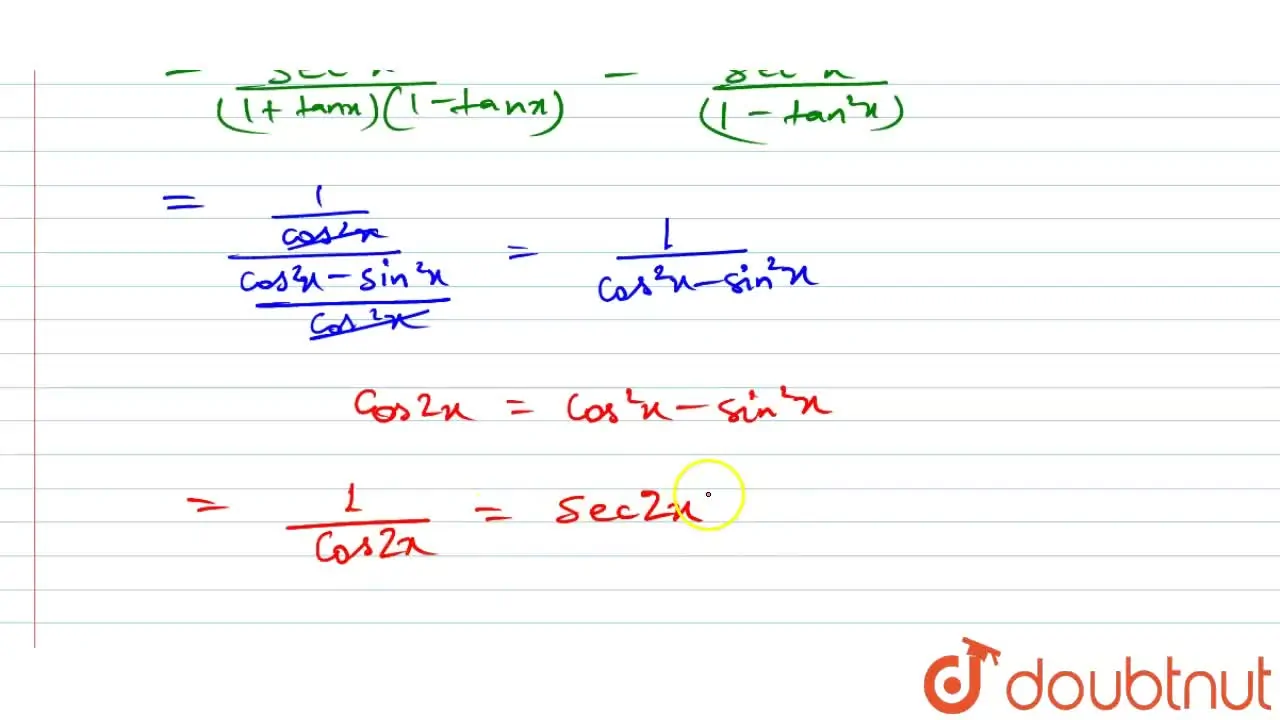If (1+x)n=c0+C1x+C2x2++Cnxn,using derivative prove that C1+2C2++nCn=n.2n−1 C1−2C2+3C3++(−1)n−1nCn=0
Step by step video & image solution for If (1+x)^n=c_0+C_1x+C_2x^2++C_n x^n ,using derivative prove that C_1+2C_2++nC_n=n .2^(n-1) C_1-2C_2+3C_3++(-1)^(n-1)nC_n=0 by Maths experts to help you in doubts & scoring excellent marks in Class 12 exams.
Related Playlists
Similar Questions
If (1+x)n=c0+C1x+C2x2++Cnxn,usingderivtivesprovethat C1−2C2+3C3++(−1)n−1nCn=0
View SolutionIf (1+x)n=C0+C1x+C2x2+…+Cnxn, prove that C0Cn−C1Cn−1+C2Cn−2−…+(−1)nCnC0=0 or (−1)n/2n!(n/2)!(n/2)! , according as n is odd or even .
View SolutionIf (1+x)n=C0+C1x+C2x2+…+Cnxn , prove that
C20−C21+C22−…+(−1)n⋅C2n=0 or
(−1)n/2⋅n!(n/2)!(n/2)!, according as n is odd or even
Also , evaluate C20−C21+C22−...+(−1)n⋅C2n for n
= 10 and n= 11 .View SolutionIf (1+x)n=C0+C1x+C2x2+…+Cnxn , prove that
C0+2C1+3C2+…+(n+1)Cn=(n+2)2n−1 .View SolutionIf (1+x)n=n∑r=0Crxr, then prove that C1+2C2+3C3+....+nCn=n2n−1. .
View SolutionFind the value of C0−[C1−2.C2+3.C3−……..+(−1)n−1.n.Cn]
View SolutionIf (1+x)n=C0+C1x+C2x2+...+Cnxn , prove that
C1+2C2+3C3+...+nCn=n⋅2n−1View SolutionIf (1+x)n=C0+C1x+C2x2+……..+Cn.xn then find C1−C3+C5+……
View SolutionIf (1+x)n=C0+C1x+C2x2+…+Cnxn , prove that (1⋅2)C2+(2⋅3)
C3+…+{(n−1)⋅n}Cn=n(n−1)2n−2 .View SolutionIf (1+x)n=C0+C1x+C2x2+……..+Cn.xn then find C0−C2+C4−C6+…….
View Solution


